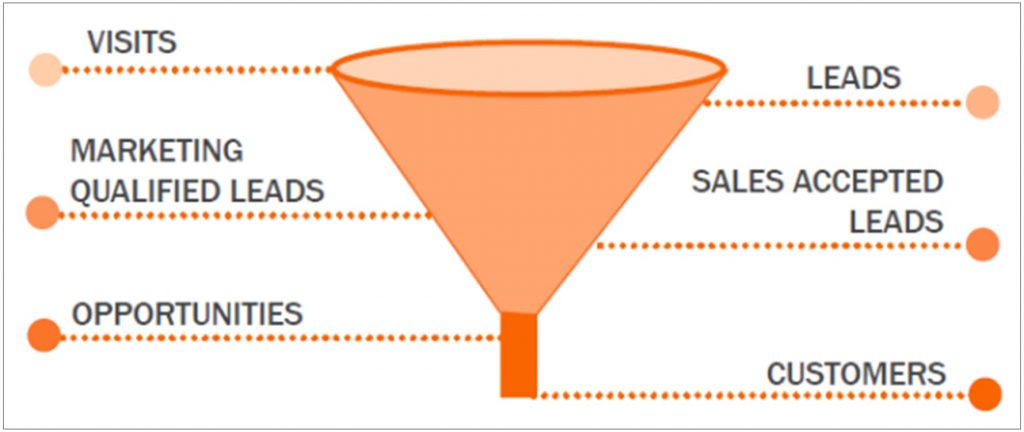We’ll be blunt. In many organisations, the relationship between Marketing and Sales is not as strong as it should be.
The relationship between Marketing and Sales has often been a difficult one. This is partly due to the perceived importance of sales, being at the sharp end of an organisation’s success. Marketing was and, in many cases, still is felt to be about ‘touchy, feely’ stuff – like brand – with events and sponsorships being some of the few areas where they were valued.
In part, this was due to the long-standing issue of Marketing being able to demonstrate its value through attributable metrics. Clearly, this situation has changed. The advent of digital channels and analytics tools has enabled marketers more opportunity to demonstrate their contribution, and the sales/marketing dynamic is changing.
In this blog, we’ll look at why a close relationship between Marketing and Sales will result in better results for both parties and the organisation as a whole, and then a series of practical steps that can be taken to ensure the relationship is as effective as possible.

The changing landscape
The need for close collaboration is more important than ever before, due to the amount of information available to consumers, giving them the tools to research potential purchases before getting in contact with an organisation.
There was a time when the flow of information only went one way. Organisations and salespeople could tell prospects about their products and services benefits and convince them their product was the one needed, with little opportunity for comparison.
This meant consumers had very few ways to review alternatives, and the effectiveness of the Sales function had a huge effect on an organisation’s success.
Times have changed and there is no longer the huge ‘information asymmetry’ between organisations and consumers. Consumers control the flow of information in the buying process. If they have a question about a product or service, a quick internet search will deliver their answer instantly, and research indicates that anywhere from 60% – 90% of purchases now begin with online research.
This means Marketing now plays an increasingly important role to Sales in customer acquisition. Its contribution in attracting prospects, filling the sales pipeline and ultimately delivering sales outcomes is undeniable.
Why Marketing and Sales need to work together
Despite the two departments broadly having the same aim – more sales and more profits – Marketing and Sales are often run as completely separate functions, which can cause problems. In an increasingly connected world, a consistent customer experience is key. Customers are now too connected and too informed to tolerate any gap between what one department says and another does.
When a customer reads an organisation’s blog and engages with its LinkedIn feed, they are set an expectation of interacting with that organisation. If a member of the Sales team then calls them and presents an entirely different personality and product-focus, there may be a disconnect with the customer, making it unlikely they will choose to continue the relationship.
This is just one example, but highlights the importance of an aligned process throughout customer acquisition. Using the same messaging and the same tone through lead generation, lead nurturing, lead qualification and sales closing will build trust with prospects and deliver shorter sales cycles, lower market-entry and reduced cost of sale.
Below we’ll look at 5 ways that Sales and Marketing can working together more cohesively, resulting in better results for both departments and the organisation.
1. Increase communication
Tension can arise if Sales and Marketing don’t feel like they are working together towards the same goals.
While Marketing is often working towards long-term, strategic goals, Sales often has a much shorter-term focus. This disconnect can result in frustration as the two departments don’t feel that they are supported by the other.
Communication is key and by educating each other on what their team is doing, why they are doing it and showing the mutual benefits that their efforts produce, both Sales and Marketing can ensure that they are both working together to benefit the organisation as a whole.
To truly stimulate collaboration, this communication shouldn’t just be at a senior level. Instead, regular meetings should be scheduled with the entirety of both teams, with agreed topics for discussion and hard data to back up any contentious points.
In a perfect world, the logical conclusion of collaboration would extend to Sales and Marketing functions sitting together in a joint ‘Smarketing’ team, to ensure that both teams are working together to deliver a consistent customer experience at all times.
2. Agree target personas
Developing agreed buyer personas ensures both Sales and Marketing are targeting the same people, tackling the same problems and promoting the same answers.
Although it is the Marketing team’s responsibility to create the target personas, they will be much more accurate and effective if they take advantage of customer insights from the Sales team. Sales teams are on the front line, interacting with customers, learning what challenges they face and what they want out of an organisation’s products/services.
Marketers can use this information to create tailored strategies overcome these challenges. By targeting the specific needs of defined prospect personas, and offering solutions to their challenges, more leads are generated at the beginning of the sales funnel, resulting in a larger pipeline and more sales.
3. Design a sales funnel together
Understanding your customers’ buying process is the key to successful demand and lead generation.
While Marketing may be aware of this process, again it’s Sales’s first-hand insights which will make the documented “buyer’s journey” truly effective.
Marketers need to know what information your prospects need at every stage of their journey. This knowledge can then be used to create a strategy that nurtures prospects, pre-empting and answering any potential objections that they may have. This nurture process will also qualify leads, meaning that only leads that are likely to convert are passed on to the Sales team.
By using nurturing and analytics, Marketing can also monitor each prospect’s unique needs, priorities and objections and pass this information on to Sales so that they can tailor their close, making a conversion more likely.
Sales funnel collaboration should mean that Sales are better armed to follow up on high quality leads, increasing conversions and revenue for the organisation.
4. Agree what constitutes a lead
Part of the development of a sales funnel is defining what constitutes a qualified lead and when this should be passed from Marketing to Sales, with a clear differential made between Marketing Qualified Leads (MQLs) and Sales Qualified Leads (SQLs).
While the exact definition of what constitutes a MQL and SQL will differ for every organisation, a broad definition would be:
- MQLs are leads that have expressed interest and match target prospects closely enough that continued communication, qualification and inclusion in the pipeline report or forecast makes sense.
- Sales Qualified Leads (SQLs) are ‘hot leads’ that are likely to close, who have reached a point in the funnel, or have completed an action that suggest a propensity to buy.
Accurately defining MQLs is much easier with the advent of marketing automation and lead-scoring. Prospects can be tracked, segmented and scored, weeding out the irrelevant e.g. a student downloading a whitepaper for educational purposes. Lead scoring can also be used to identify areas of interest for prospects, building up a profile to enable the sales approach to be tailored to them before they have even contacted the organisation.
What constitutes a SQL should be determined by Sales. They have the knowledge of what a successful customer looks like. The process for becoming a qualified SQL should be worked backwards from this, with the aim of understanding what is more likely to acquire qualified leads.
As the two teams work together, Sales can help Marketing to improve their lead generation and qualification process, showing the Marketing team which leads are higher quality and why.
For example, website visitors who opt-in for a demo of a new Fintech solution, or request a consultation may convert at very different rates. If only 5% of people who download a free demo become customers, but 25% of prospects who request a free consultation convert, Sales can pass this information back to Marketing, whereby Marketing can redesign the nurture process to ensure that prospects who opt-in for a free demo are nurtured towards a free consultation, making a final sale more likely.
If Sales doesn’t feed back to Marketing about unqualified leads, the same type of low quality leads will continue to be delivered. Again, increased communication and collaboration between the two functions will result in more leads of a higher quality, which will result in more sales and more success for both teams.
5. Agree Service Level Agreements
By working backwards from the number of sales required from a campaign and the likelihood of SQLs being converted, Marketing and Sales should work together to set and agree targets to enable the sales figures to be achieved.
Marketing should set targets for visitors, inbound contacts, MQLs etc, which can all be tracked by free automation tools (link to Google Analytics blog).
In return, Sales should agree to follow up on a minimum number of leads to make sure that Marketing’s efforts can be effectively measured all the way through to conversion.
In this way, both Marketing and Sales can ensure that they are supporting each other and doing everything that is needed to make a campaign successful and deliver a positive ROI.
Working together will benefit everyone
Sales and Marketing often attract different types of people. As Financial Services marketers, we’re often highly analytical, data-orientated and project focused. We take the long-term view and focus on building competitive advantage for the future.
Our colleagues in Sales, however, spend their time talking directly to existing and potential customers. They’re skilled relationship builders and they want to keep moving – often not looking past the next quarter-end.
It’s when these two different timescales clash that tension can arise. However by communicating, collaborating and ensuring that both teams are clear on the mutual benefits their efforts produce, Marketing and Sales should be able to work together to become more effective than the sum of their parts.








